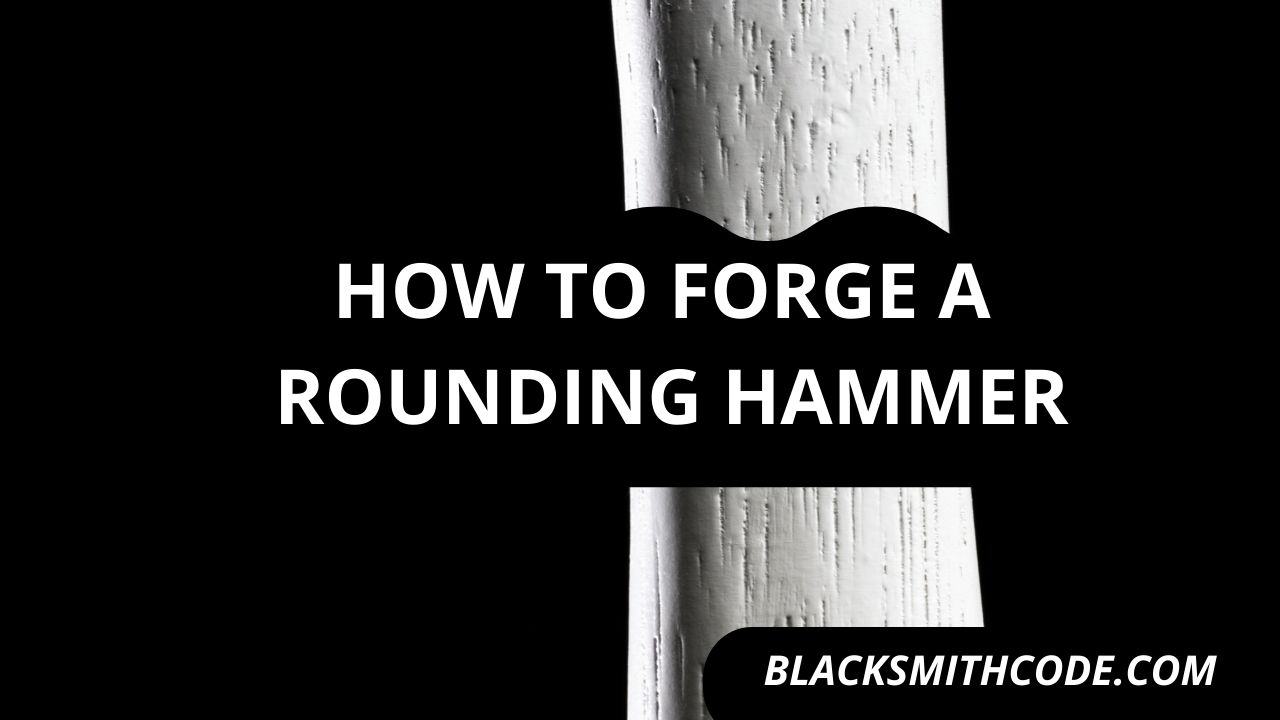Have you been longing to forge a tool of high utility? A rounding hammer is one of the essential tools in blacksmithing. Read on to find out how to forge a rounding hammer.
If you have the urge to learn, the coming steps will help you learn. So, brace yourself up for the loads of information you would get to enjoy.
But before moving to the steps, you ought to know what a rounding hammer is. A rounding hammer is a tool used by blacksmiths and farriers. The rounding hammer is useful in shaping metals and drawing out steel faster than other types of hammer.
The rounding hammer does a great job as it offers flat surfaces for smoothing and round faces for drawing. Aside from blacksmiths and farriers, carpenters and sculptors also make use of rounding hammers.
To forge a rounding hammer, you have to follow steps and procedures. These steps and methods provide a guide for you when forging a rounding hammer. The procedures to follow when forging a rounding hammer includes the following;
Instructions on How to Forge a Rounding Hammer
Step 1: Figure out Your Material
The material you use to build your rounding hammer is essential. Consider the metal you want to use to forge your rounding hammer as the first principal step. To construct your rounding hammer, you can make use of steel. It is suitable because of its high strength and other properties.
Step 2: Measure and Cut
The forging process requires a high level of precision. Therefore, it is essential to make accurate measurements and cut it out of the stock. The cutting process will also help you to figure out the suitable design.
The design does a lot of work in making forging easy. Without the plan, you might not be able to forge your rounding hammer.
Forging requires having a template or a sample you want to copy for forging. You should get a good design for your rounding hammer. The design should be a simple one so you can forge it easily.
Step 3: Heating
Heating has become a constant act in blacksmithing, especially during forging. To forge easily, you have to heat the steel to a high temperature.
To heat the steel, you should place the metal in a forge or blast furnace and heat the steel block. Heating the steel block to a red-hot stage will allow you to forge the steel with ease.
Ensuring that you heat the steel to suitable temperature is of paramount importance.
Step 4: Hammering and Shaping
As soon as you finish heating the steel, you should commence forging. Forging a rounding hammer might seem easy, but it is the most complicated stage of blacksmithing. It is the most complicated stage because it doesn’t only require force but also skill and creativity.
Quick Steps
- Use a chisel or any similar tools to carve out the shape you want your rounding hammerhead to take.
- Hammer out the round head of the hammer. Be careful with this step because it can make or mar your entire project.
- Hammer at specific angles and be precise about it.
- Drill a hole into the handle with a punch to serve as the eye of the hammer. You can do this with any suitable technique. However, it is only possible while the metal is hot; so, you might need to reheat the steel.
Step 5: Grinding and Bevelling
To grind your hammer, you have to use a belt grinder. Grinding the hammerhead will help make the hammerhead smooth. You can also bevel the hammerhead to give it your desired shape.
Grinding and bevelling are two different things, but they work together. Grinding involves making the blade smooth while bevelling is adding extra chopping touch to the hammerhead.
Step 6: Reheat The Hammer Head
You should place the hammerhead into the forge once again for reheating. Reheating helps build the strength and toughness of the hammerhead.
Pro Tip
It would be best if you heated the hammerhead till it becomes red hot. Heating the hammer in a furnace might take a couple of minutes. Reheating the hammerhead will do a great job of increasing the strength and toughness of the hammer.
Step 7: Quench The Hammer Head
Quick Steps
- After retrieving the hammerhead from the forge, you should dip the hot hammerhead in a quench liquid.
- The liquid can be oil or any other fluid that is suitable for quenching.
- It would be best if you allowed the hammerhead to cool slowly in the quench liquid and repeat the process as often as needed.
Step 8: Add Your Shaft
After forging your rounding hammerhead, you should insert it into the drilled hole in the middle of the hammerhead. It would help if you made the shaft with durable material. After joining the pole to the hammerhead, then you are good to go.
FAQs on How to Forge a Rounding Hammer
Question
Can I use a flat hammerhead instead of a rounding hammer?
You can make use of a flat hammer when you do not have an alternative. A flat head hammer will do the job, but a rounding hammer will do the job better. The rounding hammer has its function, and the flat head hammer has its function also.
You shouldn’t use one for the other unless you don’t have an alternative.
Question
Can I forge my rounding hammer from a scrap metal block?
As long as the metal block is useful and has good forging qualities, you can forge with it. Forging your rounding hammer does not require you to use a specific type of metal. You can make use of any metal.
When choosing the metal to use, you should always check out the qualities of the metal.
Qualities like durability, strength, malleability, etc. are what you should check. Forging with the right materials guarantees you the perfect result.
Question
What type of metal should I use to forge my hammerhead?
You can forge your hammerhead with different types of metal. The recommended metal for forging is alloy steel. The alloy steel is one of the best and economical metals to forge your rounding hammer with and also one of the most available metals.
The alloy steel is a very durable metal with high strength and very malleable (especially at high temperature). It is recommendable to make use of alloy steel to forge your rounding hammerhead.
Video
Warnings
To protect yourself from hazards, you should follow safety instructions. Some safety precautions include;
- Always handle all materials and tools with care.
- Always put on protective accessories.
- Make use of a proper ventilation system.
- You should have a first aid kit around you.
- Always keep your working environment tidy.





